Abstract
1. The metabolism of 5,6-monoepoxyvitamin A aldehyde in the rat was found to be identical with that of vitamin A aldehyde. It promptly alleviated all the symptoms of vitamin A deficiency and promoted the growth of the vitamin A-deficient rats. 2. When administered orally, 5,6-monoepoxyvitamin A aldehyde was reduced to the corresponding alcohol in the intestine and esterified before being transported to the liver for storage. 3. 5,6-Monoepoxyvitamin A aldehyde was not converted into the furanoid form, 5,8-monoepoxyvitamin A aldehyde, during passage through the stomach. 4. Intraperitoneal administration of 5,6-monoepoxyvitamin A aldehyde led to the accumulation of 5,6-monoepoxyvitamin A in the liver and other tissues. Subcutaneous administration of this compound alleviated all the symptoms of vitamin A deficiency. 5. The small intestine is the major, if not the only, site for the metabolic reduction of 5,6-monoepoxyvitamin A aldehyde and its subsequent esterification. 6. It was demonstrated that the rat possesses the necessary enzymes for the reduction and oxidation of 5,6-monoepoxyvitamin A aldehyde to the corresponding alcohol and acid as well as the esterification of 5,6-monoepoxyvitamin A alcohol to its palmitate. These metabolic conversions were shown to be as efficient as those of vitamin A aldehyde and alcohol. 7. 5,6-Monoepoxyvitamin A aldehyde possesses a biological potency 108% that of all-trans vitamin A acetate. 8. A new visual pigment with λmax. 480mμ, along with natural rhodopsin, was isolated from the retinas of rats maintained on 5,6-monoepoxyvitamin A aldehyde. 9. Oral administration of 5,8-monoepoxyvitamin A aldehyde to vitamin A-deficient rats led to the accumulation of 5,8-monoepoxyvitamin A in the liver and other tissues. Enzymic reduction and oxidation of 5,8-monoepoxyvitamin A aldehyde to its alcohol and acid, as well as the esterification of the alcohol, were demonstrated.
Full text
PDF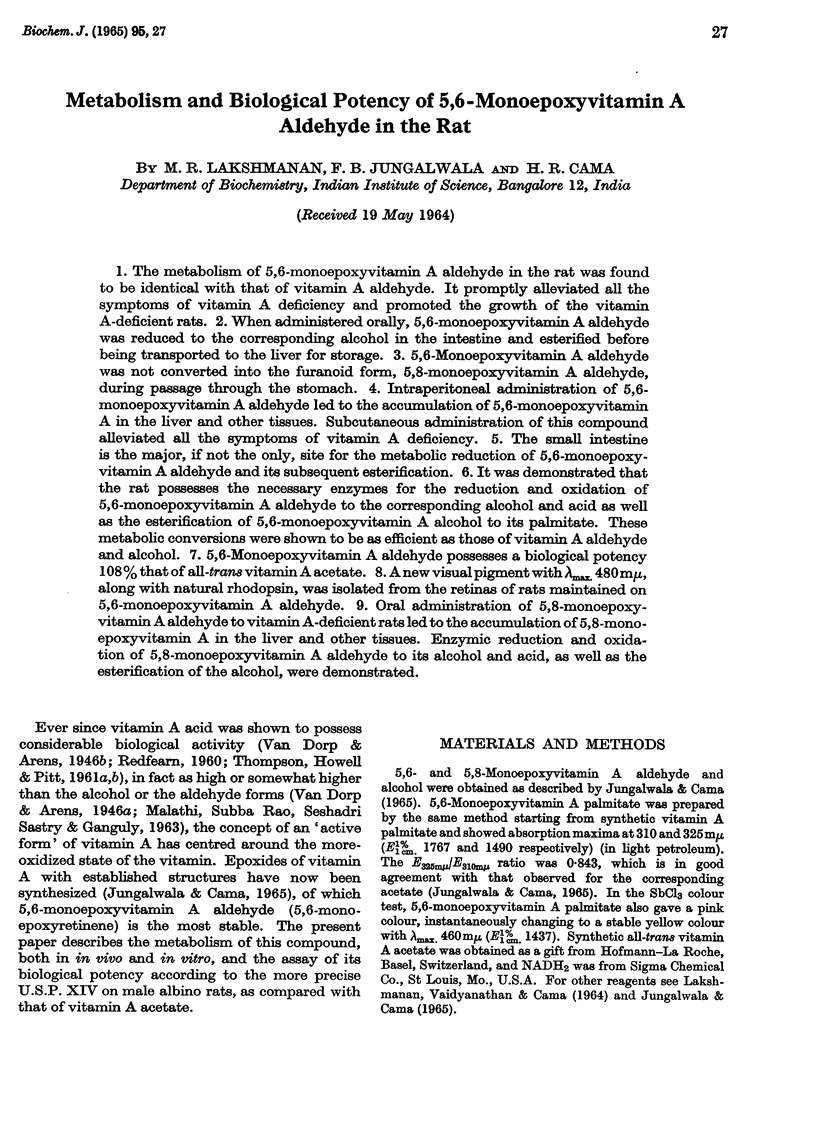
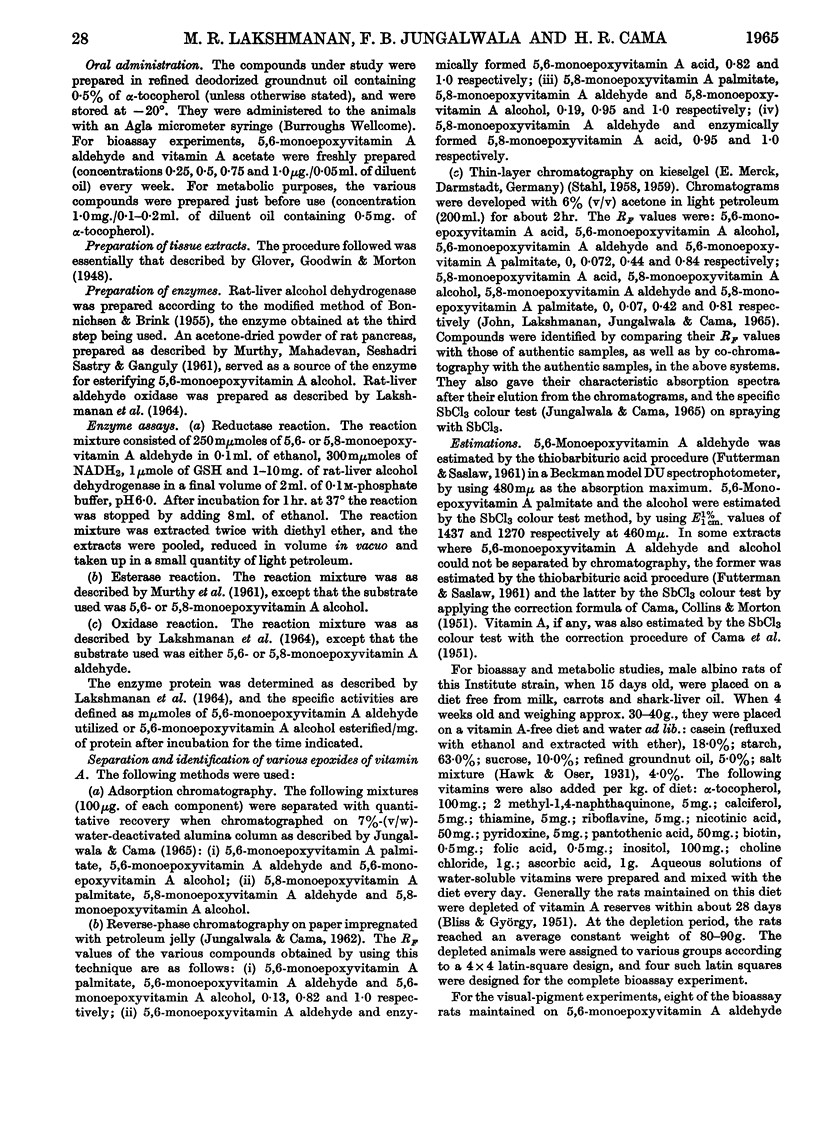
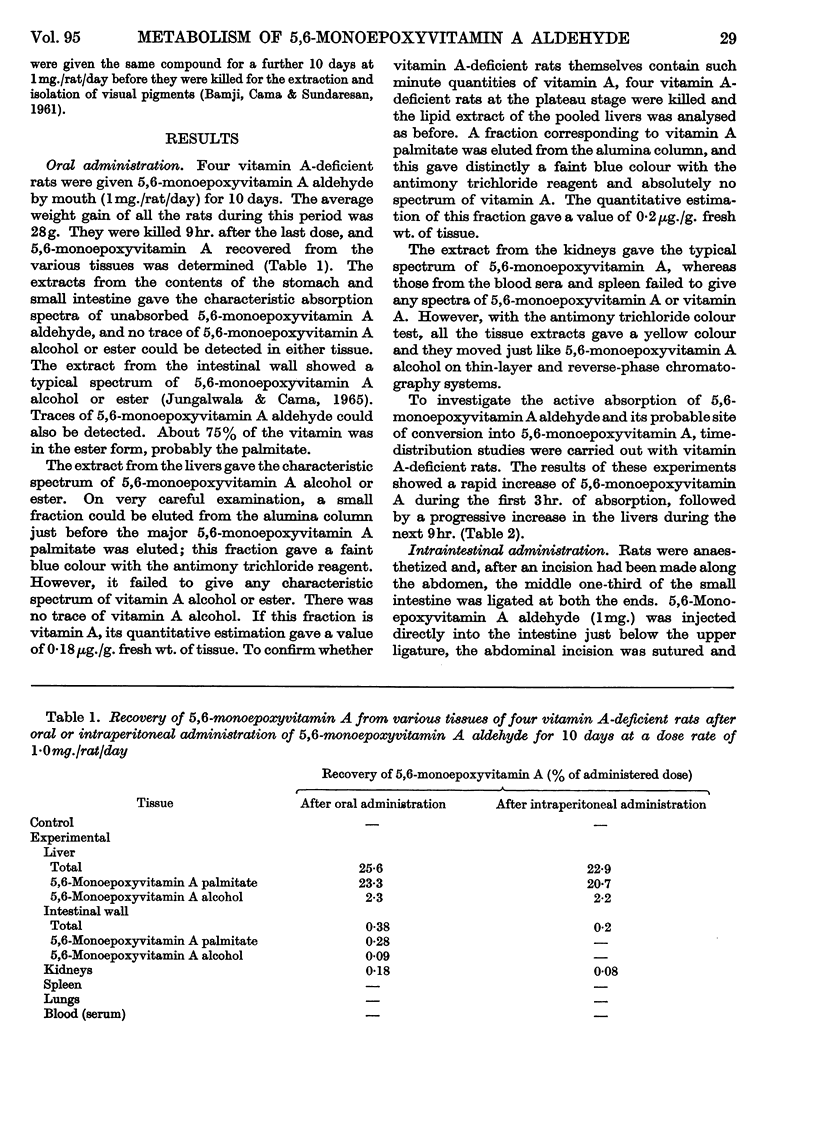
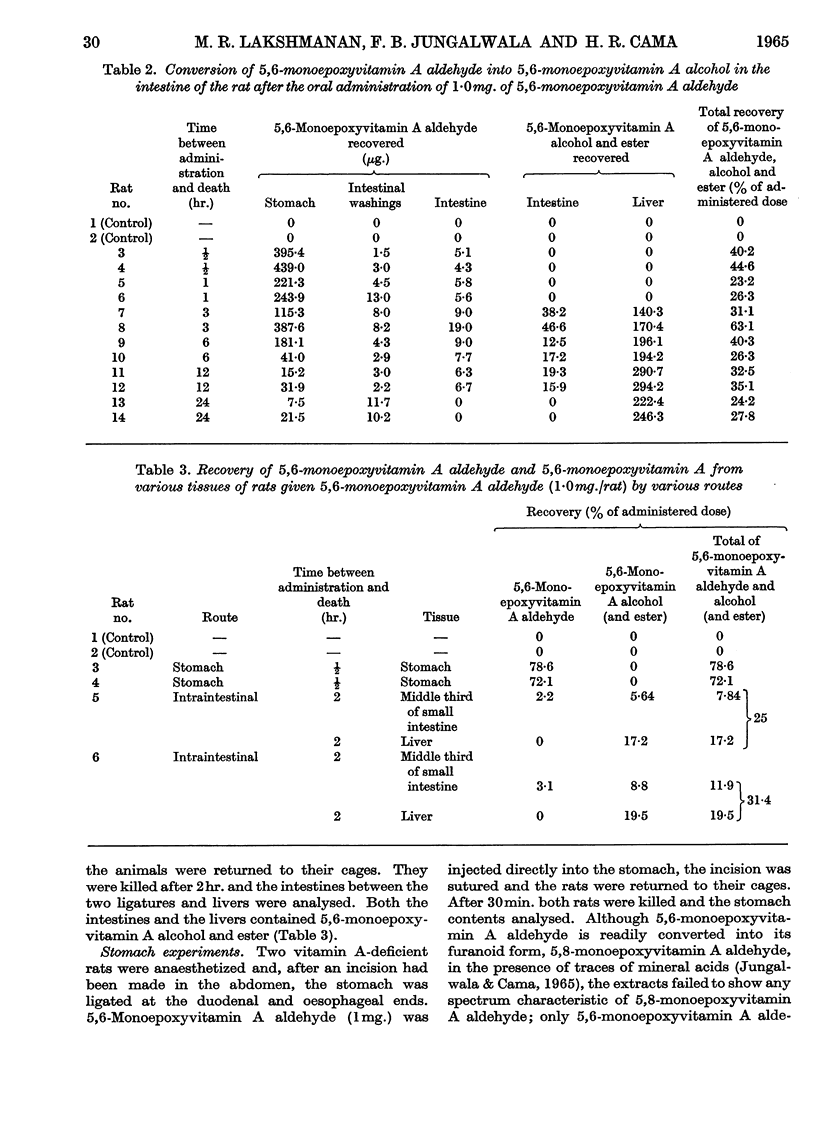
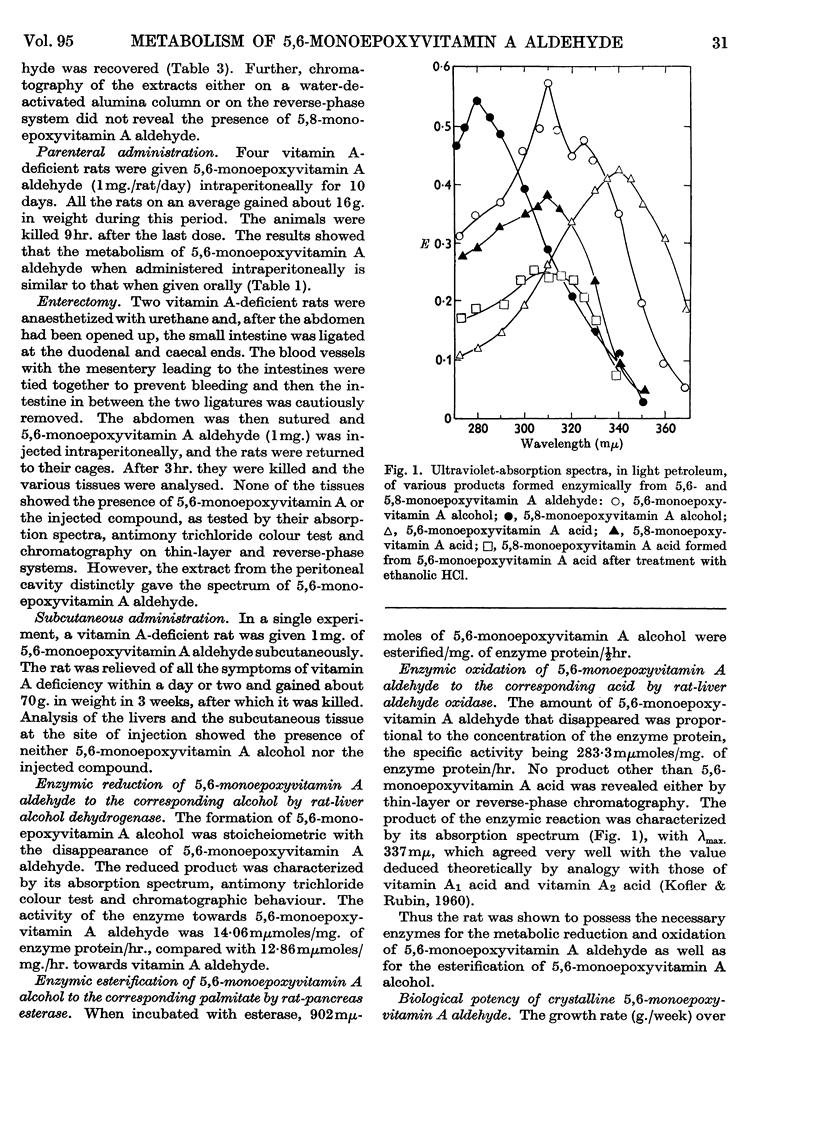
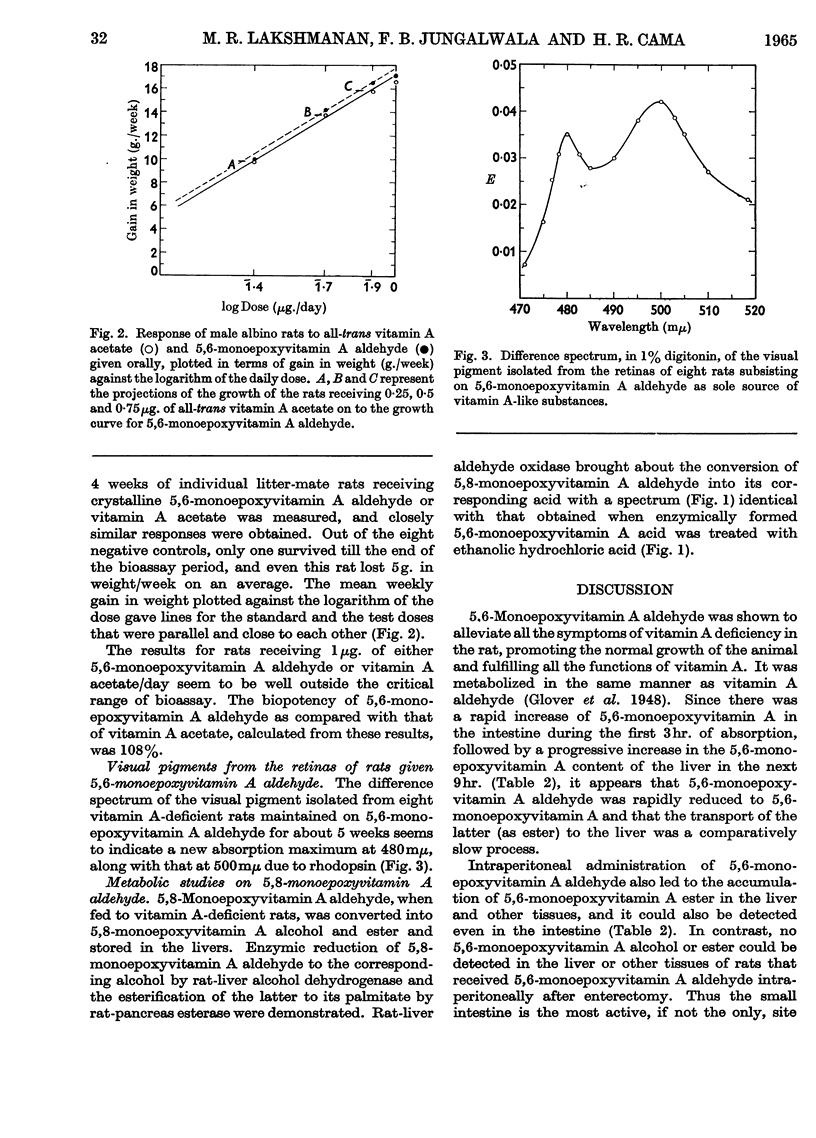
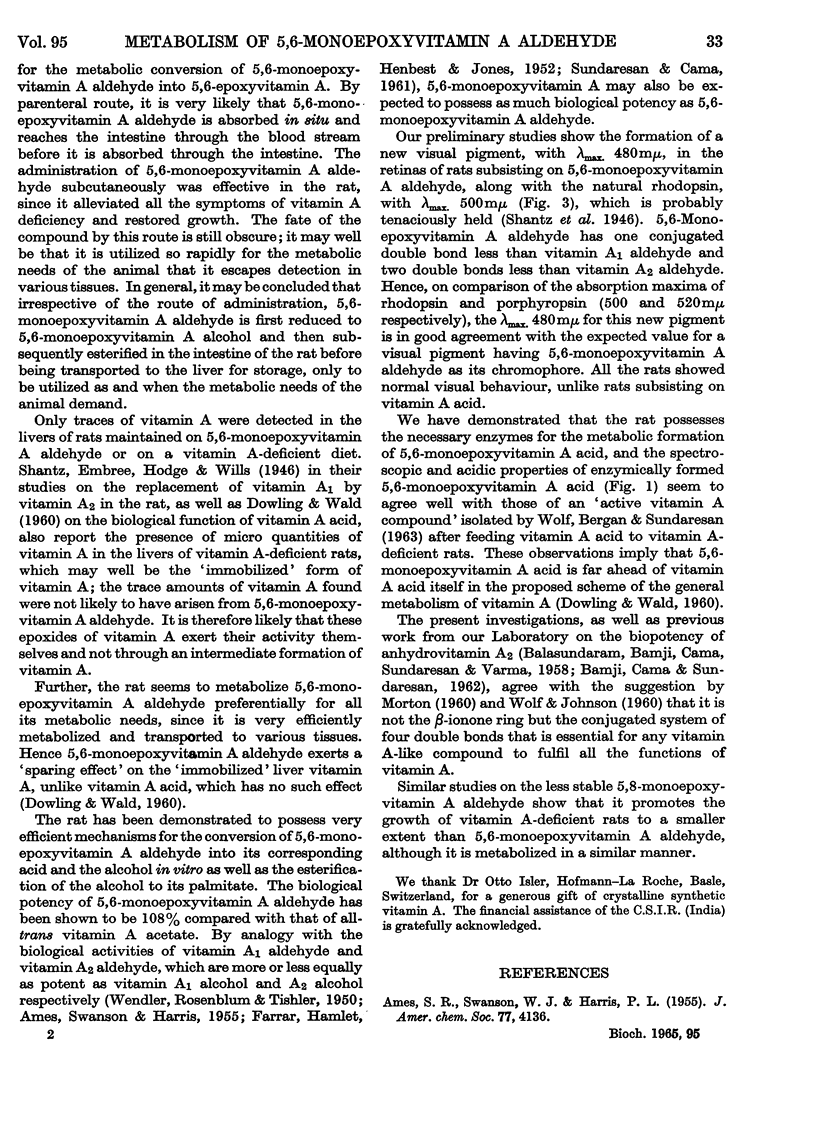
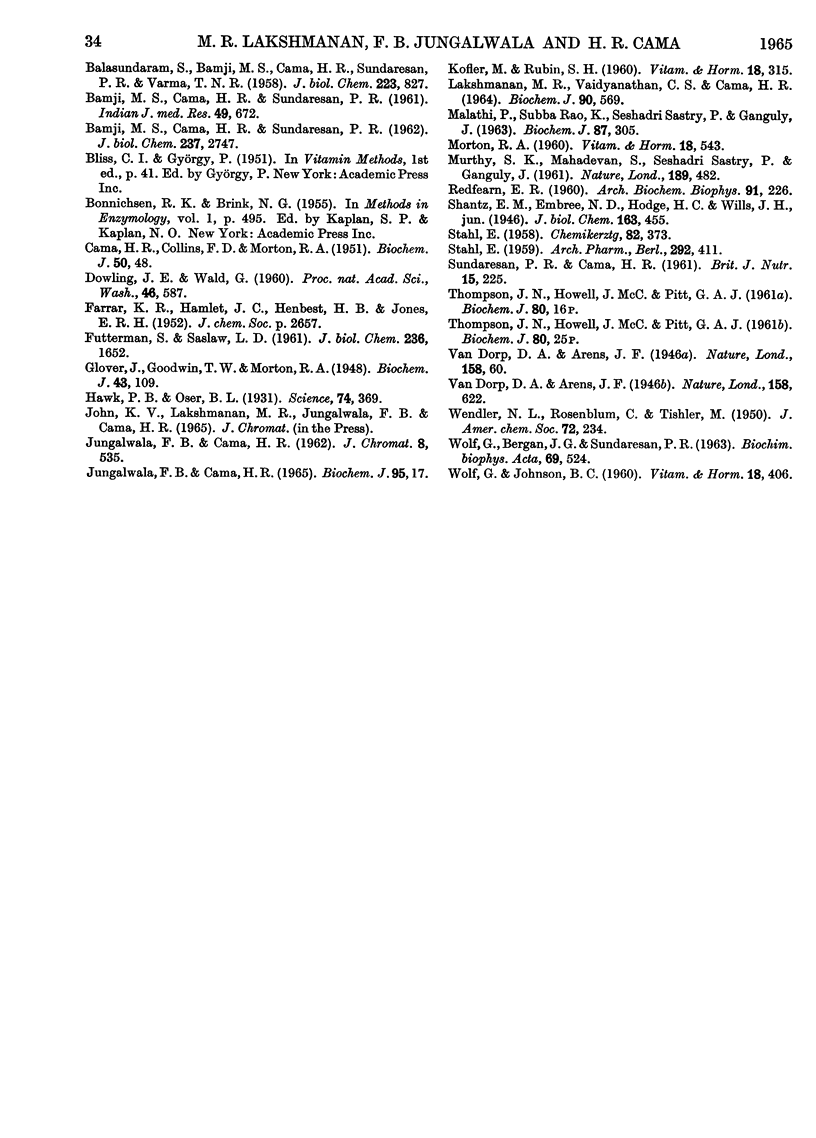
Selected References
These references are in PubMed. This may not be the complete list of references from this article.
- BALASUNDARAM S., BAMJI M. S., CAMA H. R., VARMA T. N., SUNDARESAN P. R. Anhydrovitamin A2 and rehydrovitamin A2. J Biol Chem. 1958 Oct;233(4):827–832. [PubMed] [Google Scholar]
- BAMJI M. S., CAMA H. R., SUNDARESAN P. R. Anhydrovitamin A2 and rehydrovitamin A2. II. J Biol Chem. 1962 Sep;237:2747–2749. [PubMed] [Google Scholar]
- Dowling J. E., Wald G. THE BIOLOGICAL FUNCTION OF VITAMIN A ACID. Proc Natl Acad Sci U S A. 1960 May;46(5):587–608. doi: 10.1073/pnas.46.5.587. [DOI] [PMC free article] [PubMed] [Google Scholar]
- FUTTERMAN S., SASLAW L. D. The estimation of vitamin A aldehyde with thiobabituric acid. J Biol Chem. 1961 Jun;236:1652–1657. [PubMed] [Google Scholar]
- Glover J., Goodwin T. W., Morton R. A. Studies in vitamin A. 6. Conversion in vivo of vitamin A aldehyde (retinene(1)) to vitamin A(1). Biochem J. 1948;43(1):109–114. [PMC free article] [PubMed] [Google Scholar]
- Hawk P. B., Oser B. L. A MODIFICATION OF THE OSBORNEMENDEL SALT MIXTURE. Science. 1931 Oct 9;74(1919):369–369. doi: 10.1126/science.74.1919.369. [DOI] [PubMed] [Google Scholar]
- JUNGALWALA F. B., CAMA H. R. PREPARATION AND PROPERTIES OF 5,6-MONOEPOXYVITAMIN A ACETATE, 5,6-MONOEPOXYVITAMIN A ALCOHOL, 5,6-MONOEPOXYVITAMIN A ALDEHYDE AND THEIR CORRESPONDING 5,8-MONOEPOXY (FURANOID) COMPOUNDS. Biochem J. 1965 Apr;95:17–26. doi: 10.1042/bj0950017. [DOI] [PMC free article] [PubMed] [Google Scholar]
- JUNGALWALA F. B., CAMA H. R. Separation of vitamins A1, A2 and allied substances by reverse phase paper chromatography. J Chromatogr. 1962 Aug;8:535–536. doi: 10.1016/s0021-9673(01)99306-9. [DOI] [PubMed] [Google Scholar]
- KOFLER M., RUBIN S. H. Physicochemical assay of vitamin A and related compounds. Vitam Horm. 1960;18:315–339. doi: 10.1016/s0083-6729(08)60867-5. [DOI] [PubMed] [Google Scholar]
- Lakshmanan M. R., Vaidyanathan C. S., Cama H. R. Oxidation of vitamin A1 aldehyde and vitamin A2 aldehyde to the corresponding acids by aldehyde oxidase from different species. Biochem J. 1964 Mar;90(3):569–573. doi: 10.1042/bj0900569. [DOI] [PMC free article] [PubMed] [Google Scholar]
- MALATHI P., RAO K. S., SASTRY P. S., GANGULY J. Studies on metabolism of vitamin A. 1. The biological activity of vitamin A acid in rats. Biochem J. 1963 May;87:305–311. doi: 10.1042/bj0870305. [DOI] [PMC free article] [PubMed] [Google Scholar]
- MORTON R. A. Symposium on vitamin A and metabolism in honor of Professor P. Karrer: summary discussion. Vitam Horm. 1960;18:543–569. [PubMed] [Google Scholar]
- MURTHY S. K., MAHADEVAN S., SESHADRI SASTRY P., GANGULY J. Fatty acid specificity for the esterification of vitamin A and cholesterol by intestinal and pancreatic enzymes in rats. Nature. 1961 Feb 11;189:482–482. doi: 10.1038/189482a0. [DOI] [PubMed] [Google Scholar]
- REDFEARN E. R. The metabolism of vitamin A acid and its C25 homolog. Arch Biochem Biophys. 1960 Dec;91:226–229. doi: 10.1016/0003-9861(60)90494-x. [DOI] [PubMed] [Google Scholar]
- STAHL E. [Thin-layer chromatography. IV. Insertion scheme, marginal effect, "acid and base" layers, gradation technic]. Arch Pharm. 1959 Aug-Sep;292/64:411–416. doi: 10.1002/ardp.19592920804. [DOI] [PubMed] [Google Scholar]
- WOLF G., BERGAN J. G., SUNDARESAN P. R. Vitamin A and mucopolysaccharide biosynthesis by cell-free particle suspensions. Biochim Biophys Acta. 1963 Mar 5;69:524–532. doi: 10.1016/0006-3002(63)91303-9. [DOI] [PubMed] [Google Scholar]


